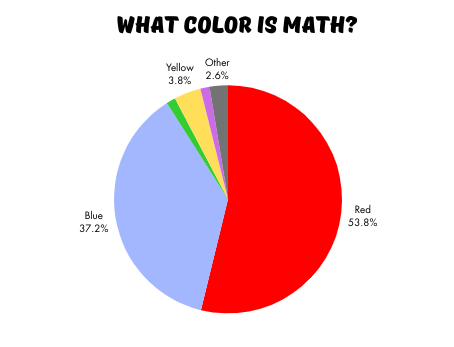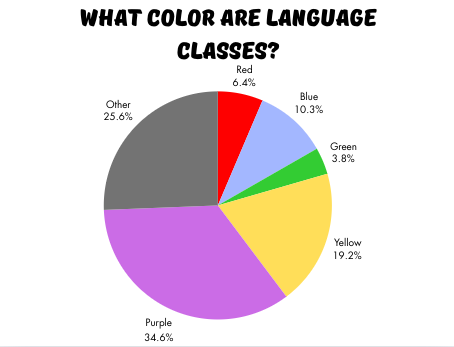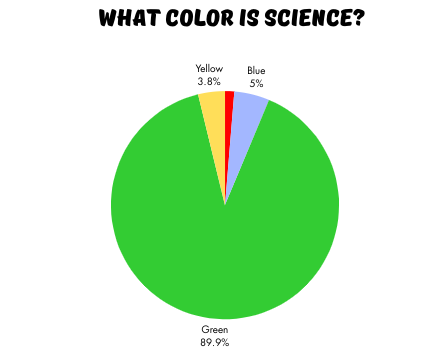The Unsolvable Equation: Red or Blue?
Photo by Skitterphoto from Pexels.
Riley “Math is Blue” Veenendaal and Gabby “Math is Red” Weisgerber
In a recent AP Lang class an argument came up: What color is math? Brought up as a fun and silly question, the class quickly turned this topic into a debate with very opinionated sides. The class was polarized between the color red and the color blue. While the majority of the class believed that red was the proper color for math, the few people who chose blue believed that they were in fact correct and that other people across the school would believe them also. Before the article continues, we want to state that none of this information is based on statistically reliable data, but observations we have had and an informal survey we conducted.
We (Riley and Gabby) each have our own opinion on the matter. One of us (Gabby) went to Marcy Elementary School where it seems to be that most people would agree that the color for math is red. The other (Riley) came from outside of the Hamilton district, where growing up, math was considered blue. In talking to our classmates and friends, we found that this trend continued. Students who have been in the Hamilton School district for their entire life seemed to be more likely to choose red as the color for math where students who moved into the district trended towards having blue as their preferred color of math. Shown below are the results of a simple survey conducted with over 70 Hamilton students.
One of the surveyed students, Lindsey McCord, a junior at Hamilton who believes blue is the color for math, stated, “I went to a private school in Milwaukee called St. Sebastian’s. My mom always picked out our school supplies and color coordinated them. [Blue] was always the color math was.”
Oppositely, Natalie Olsen, a junior at Hamilton, stated, “I went to Marcy Elementary School and I believe red is the color for math because when you bought your books for the school year they gave you red for math everytime.” Natalie has been a part of the school district for her entire life where red appeared to be the normalized color for math.
Furthermore, some student explanations for this consisted of ones that had to do with the kits schools provided to students for school supplies. For example, Marcy Elementary provided a school supplies kit for families and in it, and it seemed that the red notebook and folder were labeled to be for math. Therefore, some students feel that this could have affected their beliefs and associations of red to math.
Whether people believed that math was blue or red, many people engaging in this conversation were unwilling to change their minds. No matter how someone would try to persuade another to switch to their side, people would not change sides after deciding which color they think represents math.
Derek Zhang, a blue extremist junior at HHS who is very opinionated on the matter, expresses why he strongly believes that math is blue:
“Math is a very logical and systematic subject. For comparison, a class like physics has mostly conceptual problems, and while there are formulas, you don't follow a set process every time; the way you go about it depends heavily on the context of the problem. However, subjects in math, like algebra and geometry, DO follow certain steps that you essentially repeat over and over again. There are specific elements you look for in each problem that tell you how to proceed. To summarize, many problems in math hold certain traits that people can recognize, and that allows them to apply a standardized procedure.
“Now that the characteristics of math have been established, we can tie the discussion back to the original argument: What color is math? Scientific research has been done on the impact of colors on emotion, and these studies are based on how the general population is affected. Looking at the findings, it can be seen that red is typically a color attached to love, hate, fury, and anger, which are all very extreme emotions that are somewhat detached from the logical world. On the other hand, blue is a color that is typically more muted, tied to traits like sadness or trustworthiness; traits like these are a lot more subdued compared to the fiery emotions connected to red. Math is a logical subject, and blue, being a calmer color, resonates with this trait.”
As you can see, Zhang is very adamant that math is blue. Interestingly enough, the debate splits within the math department itself. Mr. Wunschel, AP Calculus teacher, agrees with Derek; however, Mrs. Winters and Mr. DeJarlais, Pre-Calc teachers, believe that math is blue.
Besides just math, we found that people seemed to share different opinions on all of the subjects. Students color choices for English/Writing, Social Studies/History, and Language classes had students stuck between three choices which varied per class.
The only class in which students seemed to mostly agree with each other on color was science, where 89.6% of students agreed that green was the color for science. However, junior Nolan Doherty, a student who came from outside of the district, believes otherwise. “I think science is blue because when I imagine vials filled with liquid in science class, and the liquid is always blue.”
While people have the ability to be persuaded on many different controversial topics, we observed through watching people argue about what color math is that people were very unwilling to listen to why others believed math was the color opposite to what they were thinking. What started as just a silly topic that people disagreed on turned out to be an argument that people of opposing viewpoints would not come to terms on. As we conducted our research, it was fun to see how the debate topic spread as a topic of conversation in the hallways of Hamilton.











